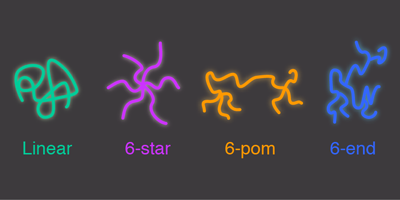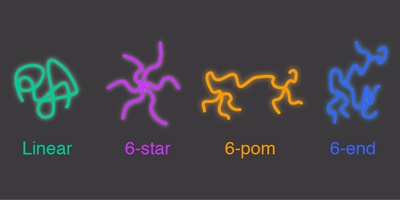Branching Out
Thin polymer films often have different dynamics compared to their bulk counterparts. This can affect the stability and performance of the films, which are widely used in applications ranging from lens coatings to solar cells. One explanation for the anomalous behavior is that the film’s surface is more influential in thinner films. Now, Shih-fan Wang and colleagues from The University of Akron, Ohio, report in Physical Review Letters that the shape of the polymer may play an even greater role.
Wang et al. synthesized polystyrene chains in which the molecules had linear, star, pom-pom, and branched configurations. They cast -nanometer-thick films of the different polymers onto solid substrates and then monitored the films’ microscopic surface ripples using x-ray photo correlation spectroscopy. By analyzing how the ripples moved in time, they inferred the films’ viscosities. Films consisting of linearly linked chains had the same viscosity as the bulk form. But, for the other polymers, the apparent viscosity of the films was much higher than the corresponding bulk value—a discrepancy that increased with the number of branches in the polymer chain.
The group tested the hypothesis that the surface affects mobility with a widely used model that describes the film as two layers with different viscosities, but they weren’t able to fit their results. The authors conjecture that, instead, what may be important in thin films of branched polymers is how easily the chains can move past each other and to what extent they interpenetrate each other. – Katherine Thomas





